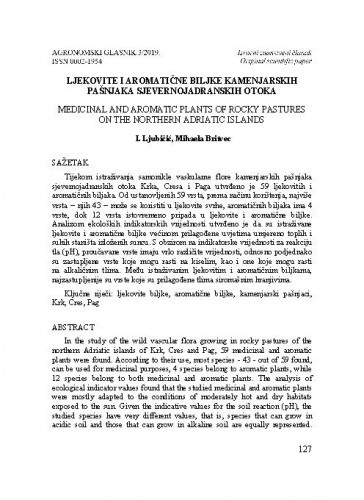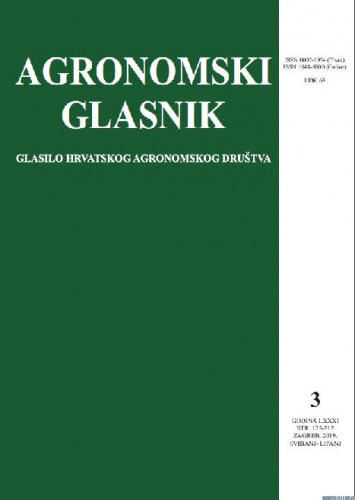Tijekom istraživanja samonikle vaskularne flore kamenjarskih pašnjaka sjevernojadranskih otoka Krka, Cresa i Paga utvrđeno je 59 ljekovitih i aromatičnih biljaka. Od ustanovljenih 59 vrsta, prema načinu korištenja, najviše vrsta − njih 43 − može se koristiti u ljekovite svrhe, aromatičnih biljaka ima 4 vrste, dok 12 vrsta istovremeno pripada u ljekovite i aromatične biljke. Analizom ekoloških indikatorskih vrijednosti utvrđeno je da su istraživane ljekovite i aromatične biljke većinom prilagođene uvjetima umjereno toplih i suhih staništa izloženih suncu. S obzirom na indikatorske vrijednosti za reakciju tla (pH), proučavane vrste imaju vrlo različite vrijednosti, odnosno podjednako su zastupljene vrste koje mogu rasti na kiselim, kao i one koje mogu rasti na alkaličnim tlima. Među istraživanim ljekovitim i aromatičnim biljkama, najzastupljenije su vrste koje su prilagođene tlima siromašnim hranjivima; In the study of the wild vascular flora growing in rocky pastures of the northern Adriatic islands of Krk, Cres and Pag, 59 medicinal and aromatic plants were found. According to their use, most species - 43 - out of 59 found, can be used for medicinal purposes, 4 species belong to aromatic plants, while 12 species belong to both medicinal and aromatic plants. The analysis of ecological indicator values found that the studied medicinal and aromatic plants were mostly adapted to the conditions of moderately hot and dry habitats exposed to the sun. Given the indicative values for the soil reaction (pH), the studied species have very different values, that is, species that can grow in acidic soil and those that can grow in alkaline soil are equally represented. Among the studied medicinal and aromatic plants, the most common species are those that are adapted to soils that are poor in nutrients.
Sažetak

 Agronomski glasnik : glasilo Hrvatskog agronomskog društva : 81,3(2019) / glavni i odgovorni urednik, editor-in-chief Ivo Miljković.
Agronomski glasnik : glasilo Hrvatskog agronomskog društva : 81,3(2019) / glavni i odgovorni urednik, editor-in-chief Ivo Miljković.